I have a few thoughts to get down that may be useful to future CDT riders. As always, take advice you find on the internet with a grain of salt!
 ]
]Go light. The CDT is not a bike trail. But you should ride it (and hike-a-bike it), anyway! You really should. But you should go light. As light as possible. Our kits evolved from racing, and that’s almost the kind of simplicity I think a CDT rider needs to approach what they carry with. If you carry too much stuff, the hike-a-bike ratio will skyrocket, and it’s already pretty high to begin with. Stay light and be able to ride hard trails with your setup.
Full suspension. We rode 29ers with 4-6 inches of travel, and highly recommend full squish. The debate on suspension vs not can go on endlessly, I know. Can it be done on a rigid singlespeed? Sure. Is it a terrible idea? Probably — no matter how hard core you are.
Besides the general toll of riding rough singletrack day in and day out, the CDT has lots and lots of trail-less travel, or tundra travel, or meadow travel. It’s great, and beautiful at times. But: Bump bump bump! The worst kind of bumps are those you cannot see or predict (thus robbing you of your ability to unweight or adjust for them), but suspension doesn’t need to see the bumps to absorb them. Many was the time we’d sit back and pedal through open bumpy areas and be glad we had lots of squish (and big wheels).
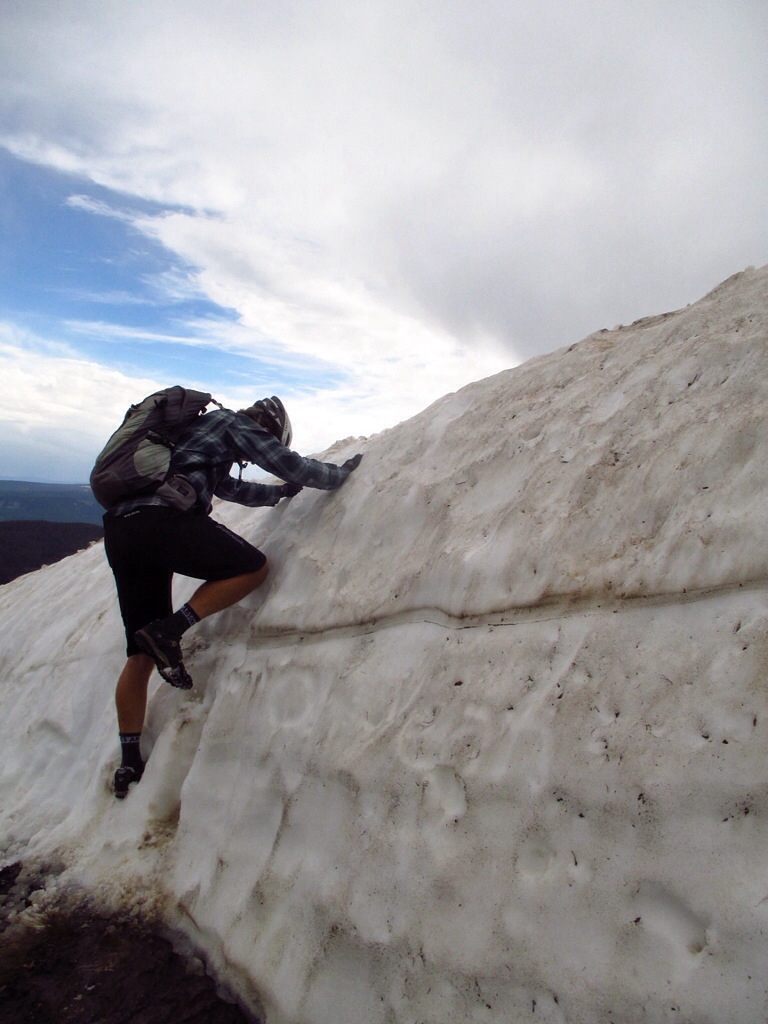
Northbound or southbound? Tough question. We loved northbound. Loved loved loved it. But we were living in Tucson at the time, so it was the easiest way to start. Plus Tucson was getting hot, so an early (May) start appealed to us (rather than sitting around roasting in the desert waiting for June to pass).
I think I would actually recommend southbound to anyone thinking about riding the CDT. Start in late June up in Montana. This way you get the hardest stuff (MT/ID border) done first. You avoid fighting through so much snow in Colorado (or waiting for it to melt), and then even if winter starts to come, that’s a good thing in New Mexico. You just have to get out of Colorado before it starts snowing too much, but you have through September to do that.
A downside is that 80% of the hikers go northbound. You may run into more total hikers heading south, but they will only be brief encounters. When you go north with everyone else, you can bounce around, get passed / re-passed, and really become a part of the trail community.
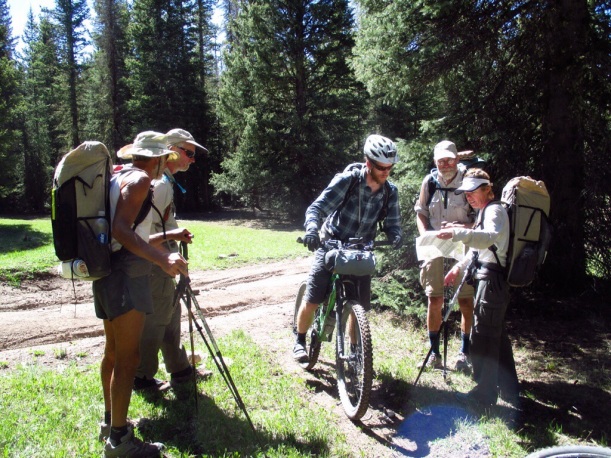
Join the community. Speaking of that, I highly recommend embracing the CDT community. As I’ve written in many places, we found hikers to be very accepting and curious about bikepacking. The community that emerges along the trail every year is one of the best aspects of doing a long distance trail like the CDT.
Join the current year’s Facebook group if you are on FB. It’s a good way to connect with hikers you meet, and also to see and post updates on the trail. Some valuable information on fires, closures, water sources, etc gets posted there.
Also check out this site: http://thetrailunitesus.com for links to hiker blogs and other useful info (such as a group-edit current water table).
Join the CDTC. They may not encourage bicycle use, and may have no idea what to say about bikepacking, but they do good work and have done a lot for the trail. I have not yet learned of a reason NOT to support them (like actively campaigning to close existing pieces of bike-open CDT), though I fear I might.
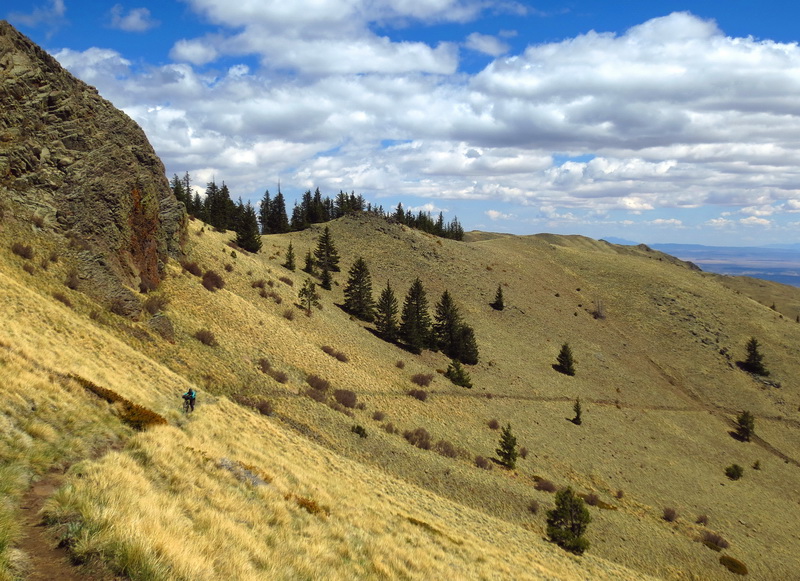
Mt. Taylor in NM is not actually on the CDT, but a well accepted alternate
Choose your own adventure. The hikers have a saying, “hike your own hike.” It applies to any long distance trail in regards to the choices you make and the ‘standards’ you might set. But it especially applies to the CDT, since it is not a trail that is very well defined, and it is one that is full of choices.
Questions to think about:
“how closely will I stay to the official route?”
“do I need to ride a continuous line?”
“how about hitch-hiking into town?”
“am I ok with slack-packing? dayriding?”
“what about alternate routes that most hikers take, but aren’t official cdt?”
“am I ok riding road alternates when thunderstorms call or other circumstances come up?”
Often questions like these may have one answer at the start of a thru-hike, and standards may degrade or change as the hike goes on. That’s fine. My advice to any future CDTer is to not sweat it. Hike your own hike, be happy with your time out there and exercise the freedom in being human. Especially when it comes to staying on the official route, sometimes it truly doesn’t make sense. Sometimes, honestly, no one actually knows what the official route is. The gps, the maps and the signs on the ground all disagree in a few places, so it’s sort of absurd for anyone to claim they walked the entire official trail.
The majority of hikers subscribe to the standard of walking a continuous line, as a bare minimum for what a thru-trip entails. So if you hitch-hike off route, you rejoin it back where you left off. That’s about the only standard I would recommend for the CDT. After all, in the end, all anyone that has completed the CDT can say is that they walked (or rode) a continuous line, from border to border, using large portions of the CDT (and probably a bunch of other cool stuff, too).
For bikes, this is especially true. You could go to stupid lengths to get out of the way pieces of official CDT (when detouring for Wilderness) but I wouldn’t recommend it. Besides doing a pretty-true-to-the-CDT trip, there are plenty of good options to do a CDT-light tour, or a GDMBR+singletrack route. Piece it together, or make it up as you go along.
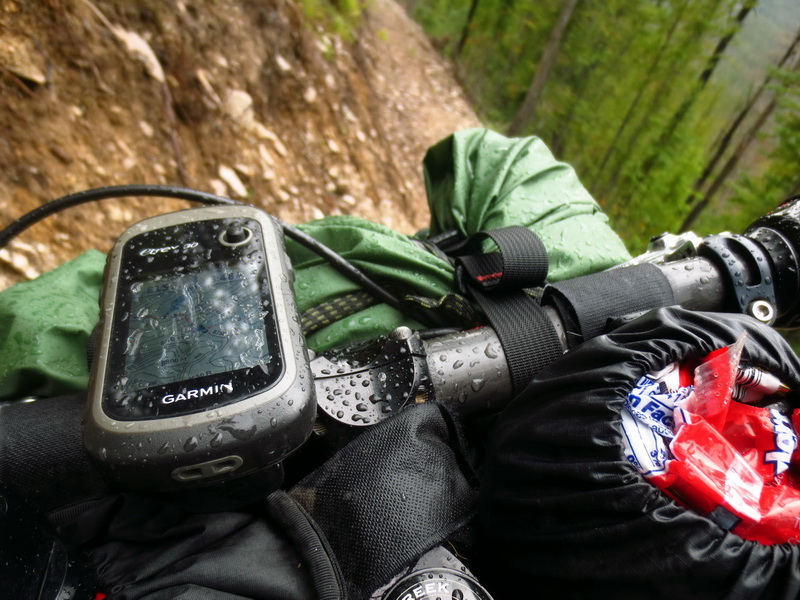
Maps and GPS. There are a few sources of data and maps. Most hikers in 2014 seemed to be using a combination of the Ley Maps (paper, printed out) and Bearcreek’s ‘official’ GPS data, mostly in the form of Guthook’s CDT app. That combo is what I would recommend, for sections where MTBers are on the CDT (or CDT alternates). Of course I’d recommend having the GPS data from our CDTbike trip for bike alternates, too. But that’s the key thing, is having data for various choices, because you never know when you might need them or want to exercise them. Ley does a great job of detailing all sorts of options. The official GPS data is a lot more rigid, and it is sometimes wrong, or doesn’t match with what’s on the ground (I sent in a half dozen or so major revisions to Bearcreek based on our trip, as well as many updates to Ley’s maps).
I never printed out any of Ley’s maps. I just put them all on my phone, using it to preview sections ahead, usually at night or in towns. That worked out pretty well, and helped me avoid printing and carrying useless maps (e.g. Wilderness). I used Guthook’s app in NM and it worked pretty well. Throwing the GPX track in an app like Gaia is probably more useful for a cyclist since you can add other options to it and follow those if needed. That’s what I ended up doing after NM. One caveat on Gaia is that it’s auto-map-download (for an area around a track) was so unreliable that I stopped even trying. I still want to find a better app for loading GPX and download topo maps. (Oh wait, how about a TopoFusion app!!! Somebody clone me and get my clone to work on it stat.)
Also key was having the official data (and other options) loaded onto my Garmin GPS, which sits on my handlebars. Having GPS data and maps on the phone is great for getting the big picture and planning, but pulling it out and seeing it in the sunlight is a pain. Also keeping it charged with the GPS running is an issue. Garmin’s are still king when it comes to runtime and screen visibility. Constantly monitoring the track and trail is the best way to stay on track, and understand the landscape/turns you are navigating through.
Two other pieces of beta are worth mentioning, too. One is Yogi’s CDT guide, mostly for her town guides. We were given some sheets from her guide from hikers and they were pretty useful for figuring out where the cheap places to stay are, good restaurants, post office, general town layout, etc. The other guide worth mentioning is only worth bringing up as a positive sign for bike access on the trail. Jim Wolf (aka the only person behind the CDT Society) is perhaps the most vocal anti-bike advocate there is. His site and updates are more about keeping bikes off the trail than they are about promoting or working on the trail itself. Slowly his voice is being listened to less and less, and his CDTS guides are, like him, out of date. Almost no one uses the CDTS guides anymore, and less and less people are still stuck in the 70’s when it comes to embracing the beauty that is multi-use trails.
Flexibility. Drop all set ideas of pacing or miles per day. Just take the terrain as it comes. Pack more food than you think it will take you. And pay attention to the next water source. They Ley maps do a pretty good job of letting you know when you don’t run into water every 10 miles or so, but they don’t always. Weather will change, fires will pop up and close sections, anything can happen! The CDT teaches you flexibility.
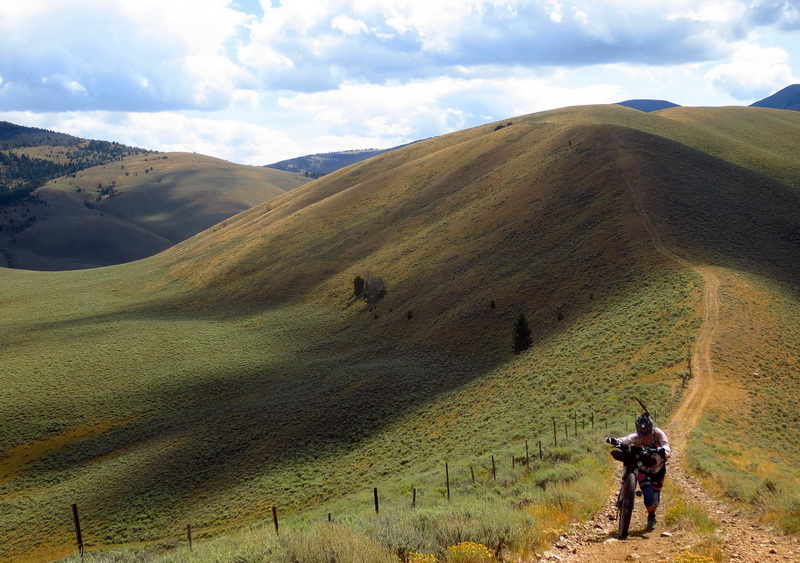
Hike-a-bike. Be ready for lots of it. Prepare mentally for it. It is more physically draining than hiking, or riding, but it doesn’t have to be a super unpleasant activity, if you’re mentally OK with it. You’re in a beautiful place, on a trip of a lifetime, so what if you have to push your bike and can’t ride it? It beats being stuck in an office somewhere…. (I try to practice this advice myself, but am not always successful in doing so… that is for certain). Eszter adds: do some core and upper body work in preparation. Your normal cycling routine probably doesn’t include this much pushing of loaded bikes. Arms get tired!
Additionally, a 2013 thru-hiker named Wired put together a nice page with links to trail resources as well as her own journal of her hike. Her ‘advice to future CDTers’ is worth reading as well. Her site is here: http://www.walkingwithwired.com/p/cdt-2013.html
My best piece of advice for riding the CDT is… to make it happen!
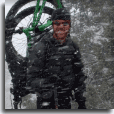


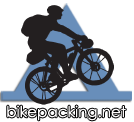
A number of years ago I bought a terrific book published by “Outside” magazine titled “Points Unknown”. It was first hand accounts and memoirs of some of the great expeditions of the 20th century – the Sahara, Antarctica, Equatorial Africa, etc. If they ever come out with a book on 21st century explorations, your trip should definitely be one of the featured expeditions. An amazing accomplishment….